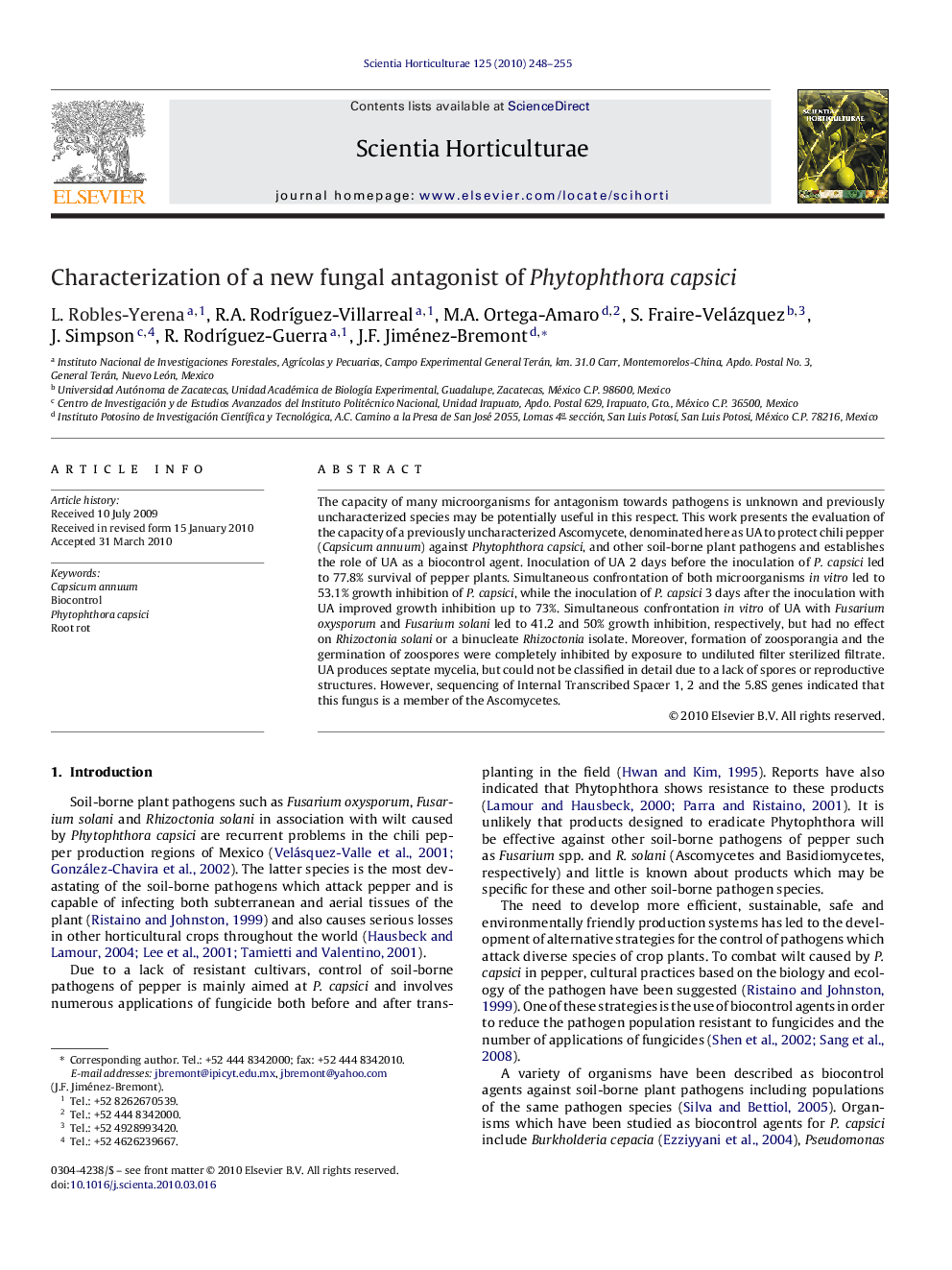| Article ID | Journal | Published Year | Pages | File Type |
|---|---|---|---|---|
| 4568666 | Scientia Horticulturae | 2010 | 8 Pages |
The capacity of many microorganisms for antagonism towards pathogens is unknown and previously uncharacterized species may be potentially useful in this respect. This work presents the evaluation of the capacity of a previously uncharacterized Ascomycete, denominated here as UA to protect chili pepper (Capsicum annuum) against Phytophthora capsici, and other soil-borne plant pathogens and establishes the role of UA as a biocontrol agent. Inoculation of UA 2 days before the inoculation of P. capsici led to 77.8% survival of pepper plants. Simultaneous confrontation of both microorganisms in vitro led to 53.1% growth inhibition of P. capsici, while the inoculation of P. capsici 3 days after the inoculation with UA improved growth inhibition up to 73%. Simultaneous confrontation in vitro of UA with Fusarium oxysporum and Fusarium solani led to 41.2 and 50% growth inhibition, respectively, but had no effect on Rhizoctonia solani or a binucleate Rhizoctonia isolate. Moreover, formation of zoosporangia and the germination of zoospores were completely inhibited by exposure to undiluted filter sterilized filtrate. UA produces septate mycelia, but could not be classified in detail due to a lack of spores or reproductive structures. However, sequencing of Internal Transcribed Spacer 1, 2 and the 5.8S genes indicated that this fungus is a member of the Ascomycetes.
